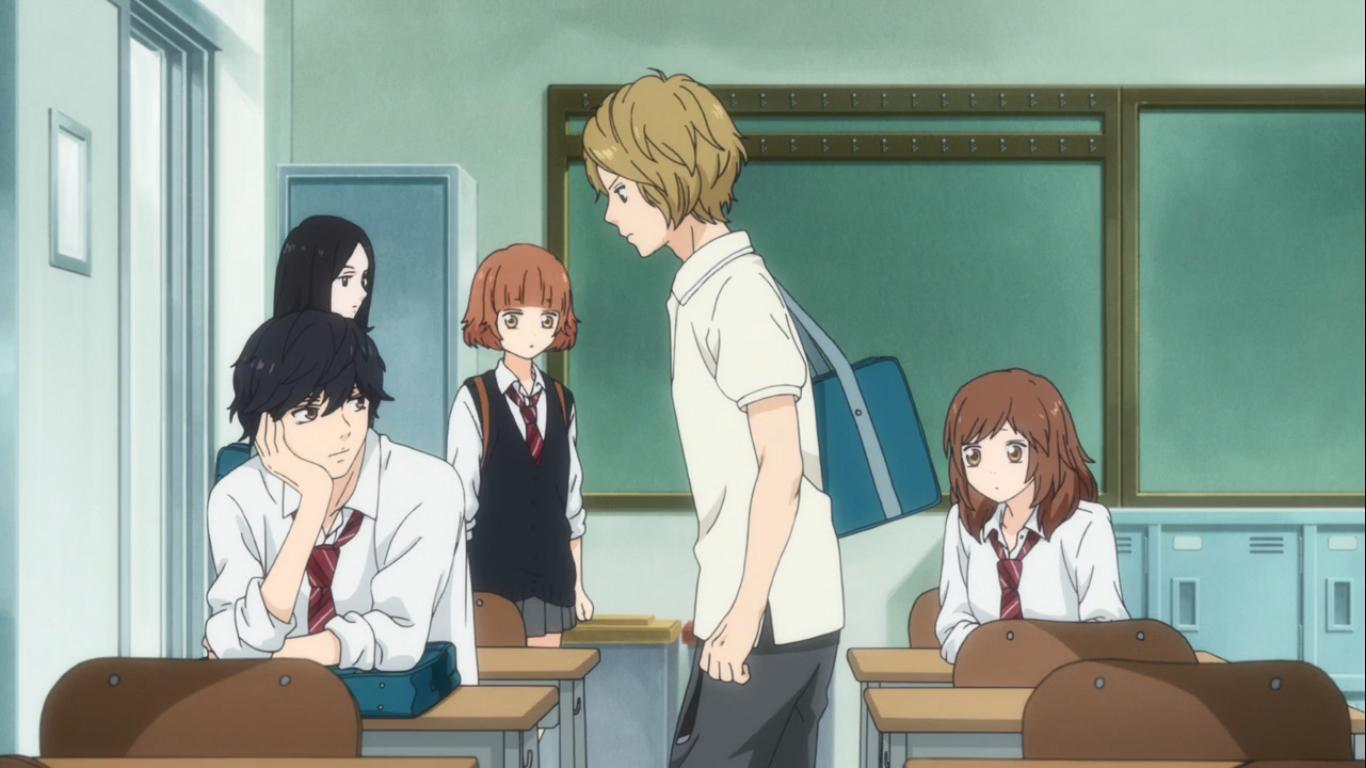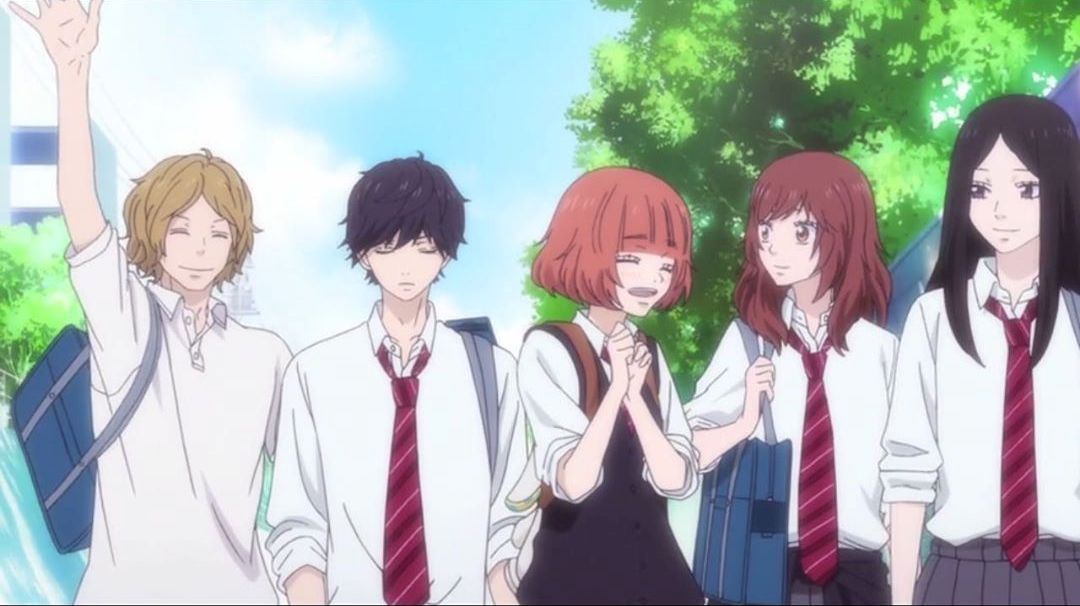This review dives into Ao Haru Ride, a touching high school romance manga by Io Sakisaka. I’ll explore its premise, characters, themes of growth, emotional highs, and also point out where it sometimes stumbles. Having read the series on ComicK, I’ll share my personal take on why this story resonates deeply and where it left me frustrated.
Discovering Ao Haru Ride on ComicK
I first came across Ao Haru Ride while scrolling through ComicK, and what drew me in was how effortlessly the platform delivered smooth, free reading without lag or broken chapters. But what truly hooked me wasn’t the convenience of ComicK, it was Futaba and Kou’s messy, complicated love story.
Right from the opening chapters, I felt like I was being pulled back into my own teenage memories awkward crushes, missed chances, and that feeling of butterflies mixed with frustration. Futaba’s anticipation of her first date with Kou was so pure that when he vanished, I felt her heartbreak echo in my chest.
Yet, what intrigued me even more was Kou’s sudden reappearance years later, with a colder edge and a guarded heart. It set the stage for a romance that isn’t sugary sweet but layered with pain, regret, and the struggle of reconnecting. That nuance is what makes Ao Haru Ride worth reading.

The Premise: A Romance Shaped by Time
At its core, Ao Haru Ride explores how people change and sometimes don’t through the passage of time. Futaba and Kou’s first meeting is almost dreamlike, but three years later, reality sets in hard. Kou’s transformation into Mabuchi, a detached and almost bitter version of his younger self, sets up an emotional contrast that drives the entire story.
I appreciated that Sakisaka didn’t hand us a fairy-tale reunion. Instead, the manga forces us to wrestle with the uncomfortable truth: the people we used to know aren’t always the same when life has reshaped them. Kou’s family troubles, hinted at with subtle sadness, made his change believable, even if frustrating.
For me, this is where the manga felt painfully real. I’ve met people again years later only to realize time had carved us into strangers. Reading this arc felt like reliving those moments unsettling, nostalgic, and strangely comforting.
Futaba’s Journey: More Than Just Romance
While the story centers around romance, Futaba’s evolution is just as important. When we meet her in high school, she has deliberately toned down her femininity to avoid standing out. I found that relatable, since many of us mask parts of ourselves in order to “fit in.”
What stood out to me was how Futaba’s growth wasn’t linear. She takes risks like becoming a student representative only after being pushed by Kou. At first, I rolled my eyes, thinking she relied too much on him. But then I realized: isn’t that how many of us find courage? Sometimes we need someone to believe in us before we believe in ourselves.
Her eventual willingness to open up to others, form new friendships, and let herself be vulnerable gave me the sense that Futaba’s story isn’t just about romance—it’s about reclaiming self-worth. And honestly, I found that message inspiring.
Kou Mabuchi: A Love Interest with Flaws
Kou, or rather Mabuchi, is the kind of character that will split readers. On one hand, he’s brooding, mysterious, and every bit the shojo archetype. On the other, his emotional distance can feel cruel, even exhausting, at times.
Personally, I found myself oscillating between sympathy and irritation. His backstory family struggles, loss, and emotional trauma explains his behavior, but it doesn’t excuse how often he pushes Futaba away. Still, those fleeting moments of vulnerability, like the quiet scene with their hands almost touching, are what make him so compelling.
In many ways, Kou reminded me of the people we sometimes cling to in our youth the ones who are broken, distant, but magnetic enough that we can’t let go. Reading him brought back the bittersweet ache of young love that hurts as much as it heals.
Romance Done Right (and Sometimes Wrong)
I’ll admit, there are times when Ao Haru Ride nails the romantic tension better than almost any manga I’ve read. That silent classroom scene where Futaba and Kou’s hands inch toward each other? Pure magic. No dialogue, no dramatic flair just raw, unspoken emotion.
But then, there are moments that fall flat. Some of the side plots feel rushed, and the lack of a character guide made me struggle to remember who’s who, especially with secondary classmates. It occasionally pulled me out of the flow of the story, which was frustrating.
Even with those flaws, the romance still shines. It’s not perfect, but maybe that’s the point. Real relationships aren’t perfect either they’re messy, confusing, and often unresolved. That’s exactly what Sakisaka captures.

The Art: Soft, Expressive, and Timeless
Io Sakisaka’s art style is, without exaggeration, beautiful. The character designs have that signature shojo softness the wide eyes, delicate features, and subtle details that give every panel warmth. Kou especially looks like he walked out of a teenage dream.
What I loved most were the silent panels, where the art carried more weight than the words. The way Sakisaka uses space, posture, and lingering glances makes you feel the tension without needing narration.
That said, I did sometimes wish for clearer side character distinction. A guide, or even more unique styling, would’ve helped. Still, the elegance of the art is part of why this series lingers with me.
Why Ao Haru Ride Stays With You
After finishing Vols. 1 2, I can honestly say Ao Haru Ride left me both satisfied and wanting more. It’s not a flawless manga there are pacing hiccups, and Kou’s behavior might frustrate readers but it’s emotionally authentic. That, to me, is far more valuable than perfection.
Reading it on ComicK was seamless, but the story itself is what made me stay up late turning digital pages, remembering my own clumsy teenage years. It’s a romance that doesn’t just ask you to swoon it asks you to reflect on the people you’ve lost and the ones you’ve grown with.
If you’re a fan of heartfelt shojo that blends sweet nostalgia with bittersweet realism, Ao Haru Ride deserves a spot on your reading list. And if you’re ready to dive in, ComicK is hands down the best place to experience it.
Read more:
- No Guns Life Review Explore the Dark Futuristic World
- Samurai 8 The Tale of Hachimaru Review Exploring Sci Fi Adventure
